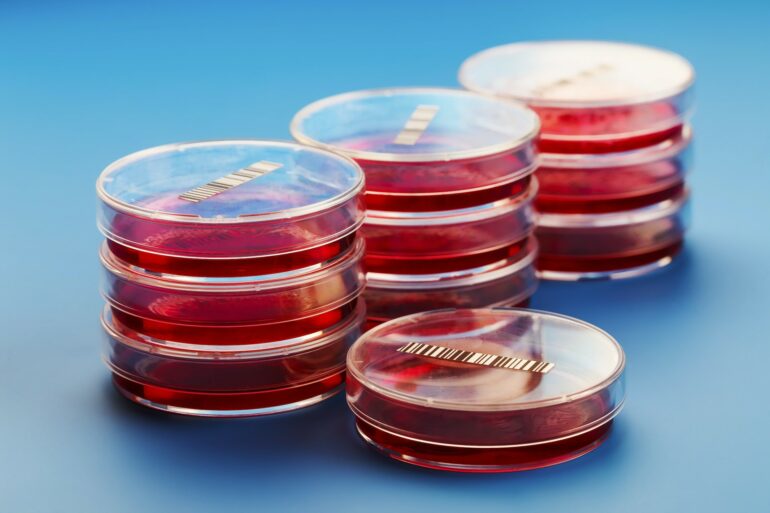You might be old enough to remember the famous “Where’s the Beef?” Wendy’s commercials. This question may be asked in a different context since U.S. regulators approved the sale of lab-grown chicken meat made from cultivated cells in June 2023.
Growing animal cells in the lab isn’t new. Scientists have been culturing animal cells in artificial environments since the 1950s, initially focusing on studying developmental biology and cancer. This technique remains one of the major tools in life science research, especially for drug development.
The USDA approved cell-cultivated chicken on June 21, 2023.
What are cell cultures?
Cell cultures are typically grown using either natural or artificial growth media. Natural media comprise naturally-derived biological fluids, whereas artificial media comprise both organic and inorganic nutrients and compounds. Both contain the necessary ingredients to foster the growth and development of cells. These ingredients typically contain nutrients such as vitamins, carbohydrates, amino acids and other molecules that provide the fuel for cells to grow and multiply.
Researchers use cells grown using tissue culture to answer a variety of experimental questions. As a biochemist, I use plant tissue culture techniques in my courses and research program. Researchers can add viruses, bacteria, fungi, hormones, vitamins and other pathogens or compounds to cells grown in culture to observe how different factors affect the cells’ behavior or function, especially as it relates to which genes are turned on or off in the cell and which proteins respond to those pathogens or compounds.
In drug development, growing cells in culture is usually the first step before potential drug candidates can be tested in animals.
Cell cultures involve growing cells outside of their native environment.
How is lab-grown meat made?
Researchers use similar techniques to grow meat in the lab. The process can generally be broken down into three major steps.
The first step involves removing a small number of cells – typically muscle or stem cells – from an animal during a harmless and painless procedure. Stem cells are cells from an organism that are not specialized and can be manipulated in the lab to turn into the many different types of cells of that organism.
The next step is culturing the cells. The cells are placed in an artificial environment favorable to their growth. Because of the large amount of cells that have to be grown to produce meat, the cells are incubated in a bioreactor – a steel tank that provides controlled temperature, humidity, pressure and sterile conditions – with the appropriate medium to facilitate growth. The growth media are changed a number of times to encourage the cells to differentiate and multiply into the three major components of meat:…



